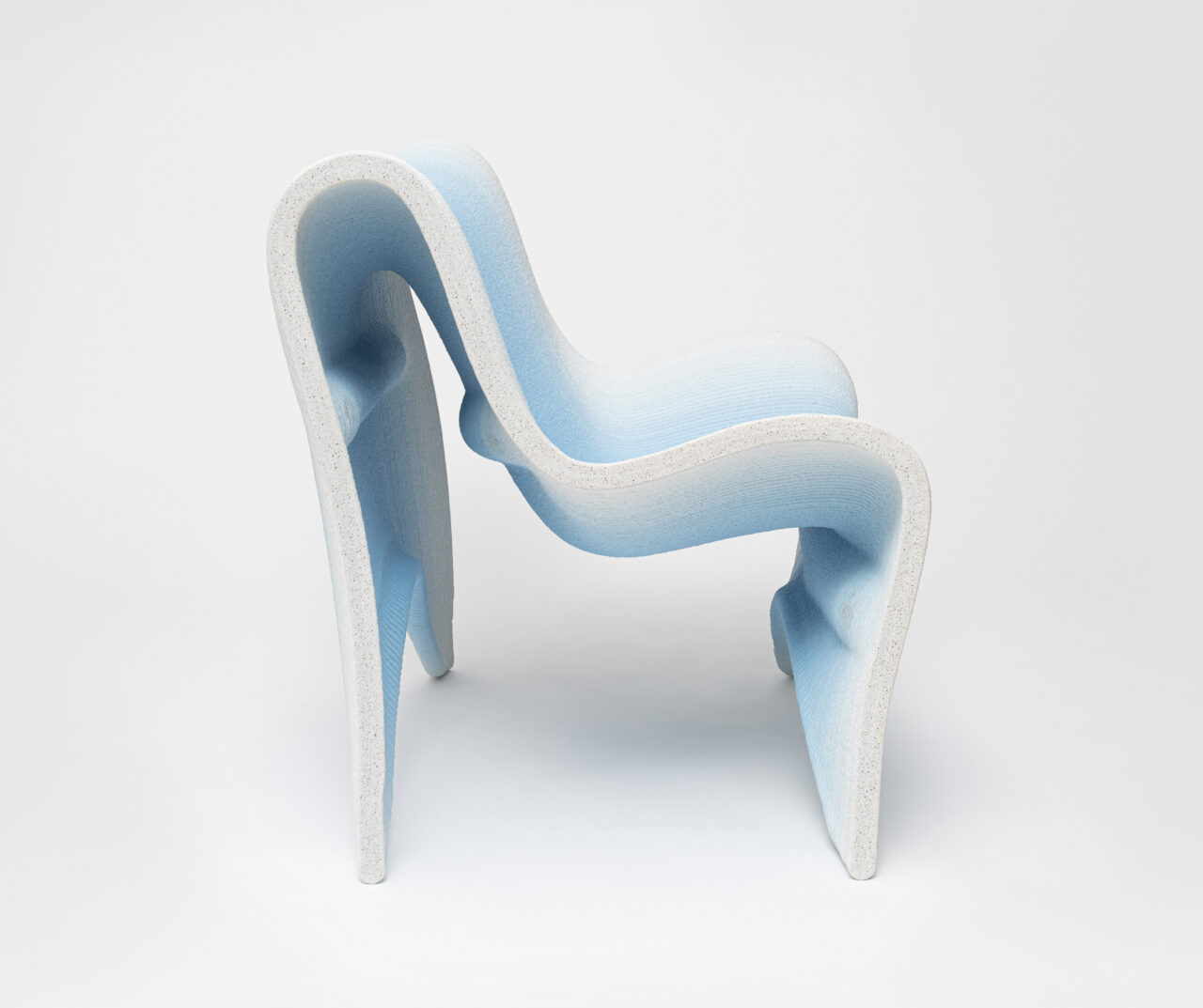Platinum Winner of the International Architecture & Design Awards 2022
Architect / Designer:
Philipp Aduatz
Studio:
Philipp Aduatz Design
Design Team:
Philipp Aduatz Design
Incremental3d
Country:
Austria
The 3D printed gradient furniture collection is Philipp Aduatz latest project in the field of 3D concrete printing in collaboration with the Austrian manufacturer incremental3d. 3D concrete printing is a new and innovative fabrication technology that allows to print very large and complex structures in construction and design in a very short time period. The advantages are not only from ecological and economic reasons, no extensive mould production is necessary, but also from new aesthetic qualities. As part of a research project, incremental3d is currently exploring the dying of concrete.
The strategy is to apply dye during the printing process directly into the nozzle and therefore reduce workload, waste and time delay. This allows a coloured design in concrete applied locally point by point and not globally, like it used to be before only possible. Incremental3d teamed up with designer Philipp Aduatz to further evolve its technology by the implementation of the developed research in product design. Together they developed a new collection of benches, a chair and a large vase. By the application of a gradient and the exploration of possible shapes through an interactive working method they developed an approach to exercise the design process throughout 3D concrete printing. Another challenge during the product development for this project was to develop a suitable reinforcement technology to provide the load capacity for the design language. Concrete is by its nature a material with very little tensile strength; therefore, it should be reinforced. In this case, a customized semi-automatic strategy was developed. The required payloads had been calculated, tested and proved by the high performance of steel. This was visually perfectly integrated into the design.
The Gradient
An image gradient refers to the change of intensity of color within an image. In image processing, the gradient of an image is one of the fundamental building blocks. Designer statement about the gradient:” For many years, I have been obsessed by the concept of a gradient which reflects elegance and harmony to me. I believe that the gradient is, in regards to the perception of the environment and its digital reflection, a fundamental design principle. It has a mathematical aesthetic and precision that I have always been admiring. With this project I want to combine the design of the gradient with different functional objects by the use of innovative fabrication technologies.” Philipp Aduatz
3D Printed Gradient Vase
The inspiration and tool for the design of the Gradient Vase was subdivision modelling, a computer graphics technique that generates a surface by the representation of a coarser polygonal mesh using a recursive algorithmic method. One half of the Gradient Vase shows the polygonal mesh which works as a functional limit and inner mesh. The other half shows the curved surface generated by an iterative process of subdividing the polygonal faces into smaller faces till the coarse mesh transforms into a smooth and elegant surface.


